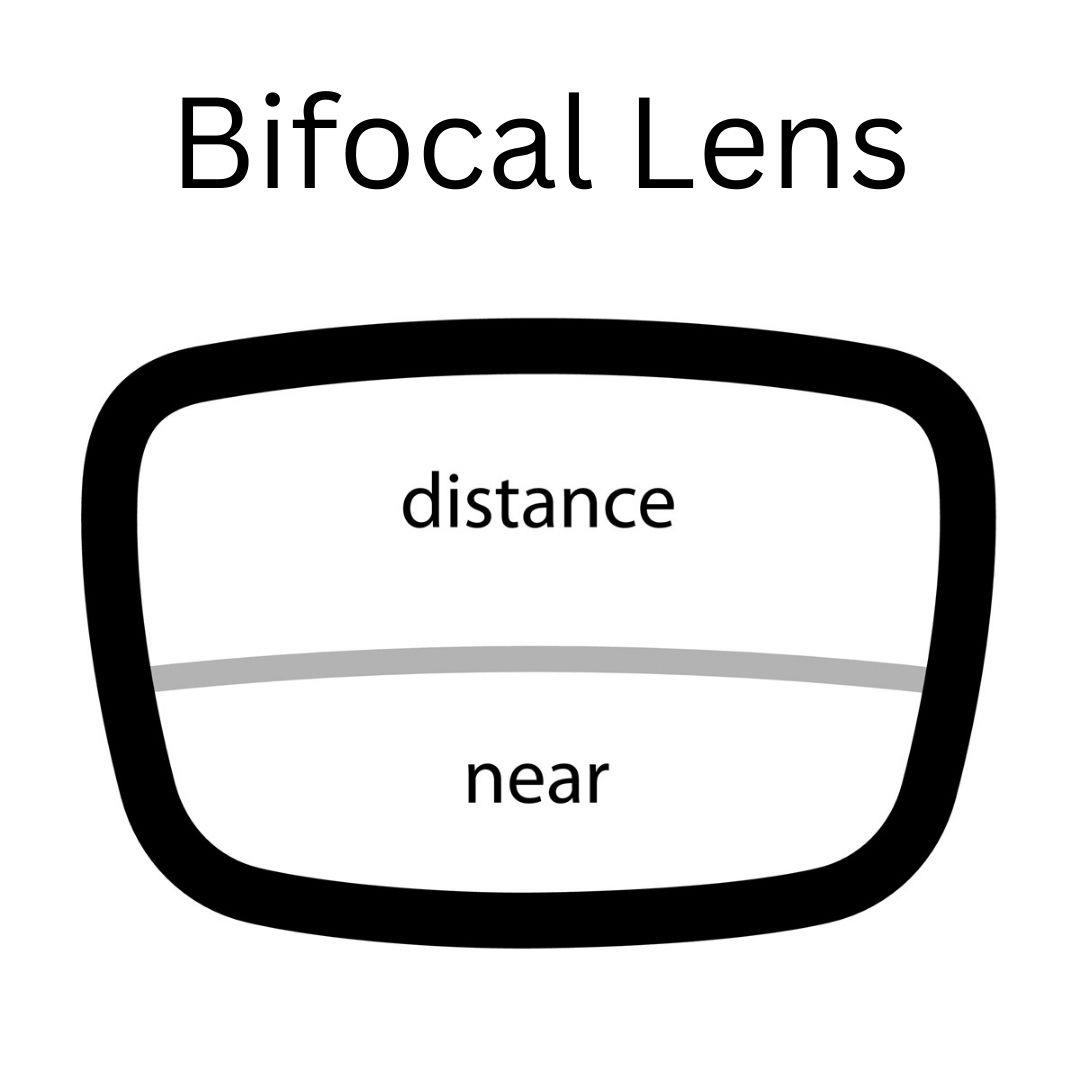Introduction
Bifocal eyeglasses, or bifocals in short, are eye glasses with two focal points on each lens. They cater for both near and distance vision. The lenses are designed such that the upper part clearly focuses distant objects while the bottom segment focuses near ones. The segments are divided by a distinct line that runs across the lens.
The upper part is useful for tasks such as driving. The lower segment on the other hand, is used for up-close tasks like reading a book or newspaper. Bifocals are for those who don’t want to keep switching between distance glasses and reading glasses. Other types of multifocals include trifocals and progressive lenses. Trifocals include a middle segment for intermediate vision. Progressives are an advancement to multifocals. They have gradual change in power over the lens area. That means they don’t have a visible dividing line.
Types
Bifocals can be classified based on the shape of the lower segment as follows:
- Flat-top/D-segment/Half-moon bifocals – These are glasses which have the lower segment shaped like an inverted D or a half moon. The segment is positioned nasally at the bottom of the lens. It is devoted for near vision. The upper part, separated by a distinct line, contains power for distance vision.
- Round segment bifocals – These glasses make it easier to reach the reading segment which is round in shape. However, they restrict proper viewing of distant images.
- Rectangular/ribbon-shaped bifocals – Instead of a round or half moon configuration, these glasses have a rectangular/ribbon shaped segment dedicated towards near vision. The segment is located near the bottom of the lens.
- Executive bifocals – The lens resemble the Benjamin Franklin model in these bifocals. As such, it is also referred to as the Franklin lens. It can also be called dual/full segment lens due to the almost equal sections. The separating line extends all the way across the lens. These types of bifocals offers the widest reading range.
- Blended bifocals – In an attempt to conceal the unsightly line, blended bifocals were made. These were popular before the progressives. They are typically round segmented but have the line polished and invisible.
Indications
Bifocals are prescribed in conditions such as:
- Presbyopia - The most common use of bifocals is in presbyopia. This is a condition that is apparent around the age of 40. For farsighted persons, it may occur even earlier in their mid-thirties. Diabetes may also result in an early onset. Presbyopia is caused by the lens becoming rigid or the muscles not working well. The eyes gradually decrease their ability to focus on objects nearby. The symptoms include not being able to clearly read prints.
- Accommodative esotropia – This is one of the most common forms of strabismus. It manifests as cross-eyedness where the eyes are turned inwards. It arises as a result of efforts by the eyes to focus on nearby objects. It is mostly linked to uncorrected hyperopia (farsightedness). The deviation can be intermittent or constant. It is first seen at a young age, around 2 or 3 years.
- Accommodative dysfunction – This is a condition where one is unable to focus correctly. Unlike in presbyopia, it is unrelated to age. The dysfunction may make it hard to sustain focus or may make it difficult to switch between near and distant vision. A spasm could also occur in the muscles that prevents them from relaxing. As a result, blurry vision is common for far and near objects.
Diagnosis
To determine whether you require bifocals, the eye doctor will do an examination. The test includes a history examination to check for hereditary causes. The eyes may also be assessed for other potential eye conditions that can cause vision problems.
To test for near vision, the doctor will hold out a small handheld card about 14 to 16 inches away. He/she then asks the patient to read out the different-sized letters and numbers. With the results, the doctor can help the patient choose from a variety of lenses.
Problems Associated with Bifocals
Despite bifocals being helpful in providing two lens powers, they have several downsides. These include:
- They contain a visible line – The progressives offer a seamless transition that gives them an advantage over bifocals.
- Visual distortion - The line creates a jump from the different segments of the lens. The fluctuation can distort images.
- Takes time for one to adjust – The glasses can cause headaches, dizziness and nausea at the onset. Most people need some time to adapt.
- Lacks intermediate section – Bifocals do not cater for intermediate vision which is important for tasks such as use of the computer screen.
To adjust, one needs to put on the glasses all the time, during the day. In case problems persist, the patient may get the prescription strength changed.


